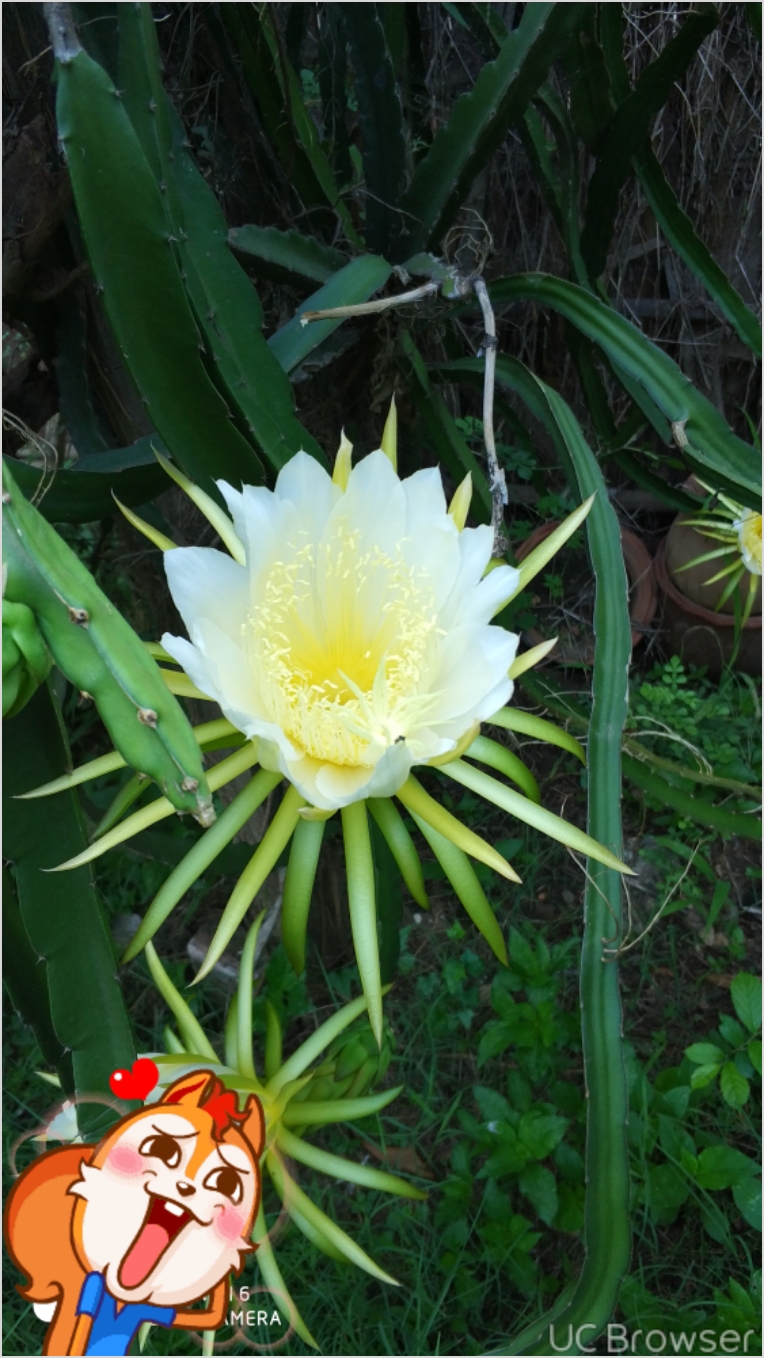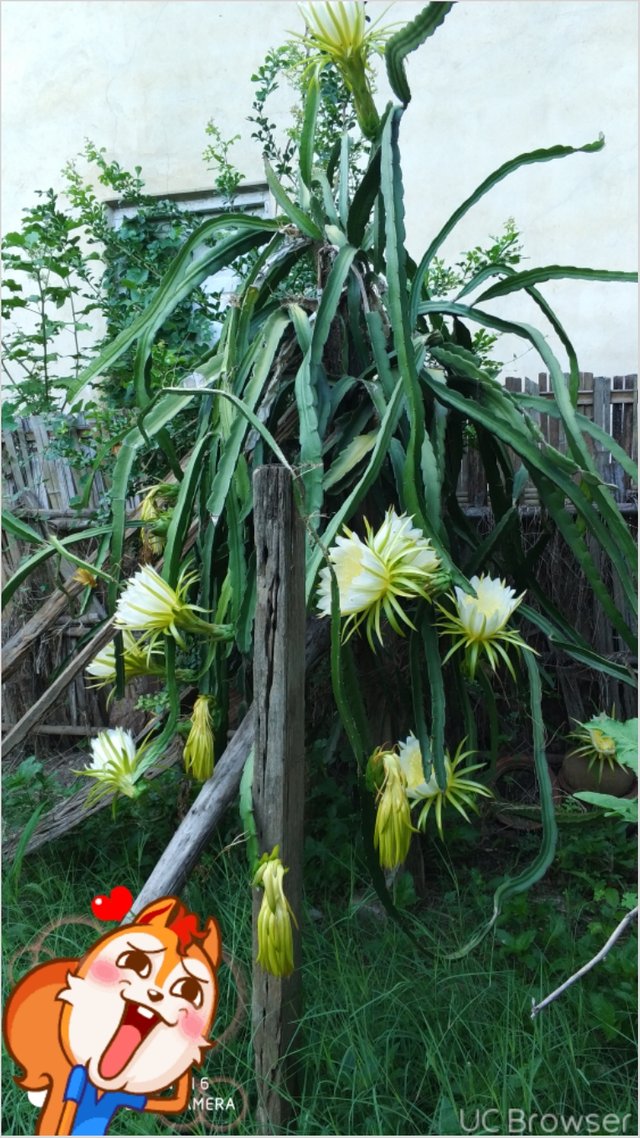 Debbie Waumsley/Creative Commons 1.0
Debbie Waumsley/Creative Commons 1.0
01
of 09
What is Dragon Fruit
Dragon fruit is a beautiful fruit grown in Southeast Asia, Mexico, Central and South America and Israel. The plant is actually a type of cactus, and the fruit comes in 3 colors: 2 have pink skin, but with different colored flesh (one white, the other red), while another type is yellow with white flesh. Dragon fruit is low in calories and offers numerous nutrients, including Vitamin C, phosphorus, and calcium, plus fiber and antioxidants.
02
of 09
Choosing Dragon Fruit
Dragonfruit
Brian Yarvin/Photographer's Choice RF/Getty Images
Dragon fruit is sweet and crunchy, with a flavor that's like a cross between kiwi and pear. To choose a ripe dragon fruit, look for bright, even-colored skin. If the fruit has a lot of blotches (a few is normal), it may be over-ripe. Hold the dragon fruit in your palm and try pressing the skin with your thumb or fingers -- it should give a little, but shouldn't be too soft or mushy. If it's very firm, it will need to ripen for a few days.
Continue to 3 of 9 below.
03
of 09
Cutting Dragon Fruit
Cutting the Dragon Fruit. D.Schmidt
Dragon fruit will cut quite easily. Placing the dragon fruit over a cutting board or other clean surfaces, cut the fruit straight down the middle with a sharp knife.
Continue to 4 of 9 below.
04
of 09
Opening Dragon Fruit
Opening the Dragon Fruit. D.Schmidt
After cutting through to the other side, you can separate the fruit into two sections. Inside the flesh may be white or red--both will have tiny black edible seeds, just like kiwi fruit.
Continue to 5 of 9 below.
05
of 09
Separating the Flesh from the Skin
Separating the Flesh from the Skin. D.Schmidt
Removing the flesh from the skin is quite simple, similar to an avocado. Just run a tablespoon around the circumference of the sections to separate the flesh from the skin.
Continue to 6 of 9 below.
06
of 09
Lifting Flesh Out of the Skin
Scooping the Flesh out of the Skin. D.Schmidt
Using the spoon, lift the flesh out of the skin and place it on the cutting board. Reserve the skin for serving (as in step 9), if desired. Note that the skin is NOT edible.
Continue to 7 of 9 below.
07
of 09
Removing Skin from Flesh
Removing any residual Skin. D.Schmidt
Turn the mound of flesh over, checking for any residual pink skin. If there is any skin, slice it off, as the skin isn't healthy to ingest.
Continue to 8 of 9 below.
08
of 09
Slicing Dragon Fruit
Slicing the Fruit into Cubes. D.Schmidt
Now you can slice up the flesh. Cubes work well for eating the fruit fresh, but you can cut any way you please.
Continue to 9 of 9 below.
09
of 09
Enjoying Your Fresh Dragon Fruit a Variety of Ways!
Eating the Dragon Fruit!. D.Schmidt
If desired, you can return the cubes of fruit into the skin shell to serve, or simply transfer to a serving dish and enjoy. Cubes of dragon fruit are a wonderful addition to a fresh fruit salad with a tropical Thai twist. It is also delicious as a cocktail in this easy martini recipe.
delicious as a cocktail in this easy martini recipe.
Leftovers can be refrigerated, like any other fruit, in a covered container.
Title အတြက္ Post တင္တဲ့ ေနရာမွာ # ခံၿပီး ရုိက္ရင္ Title နဲ႔အႀကဳံးဝင္ပါတယ္။ ေအာက္က Title Box ထဲ မွာ အၿမဲတမ္း myanmar ထည့္ေပးပါ၊ min thant ဆုိတာက မိမိ အမည္ေတြသာျဖစ္ေနပါတယ္၊ ကုိယ္ေရးတဲ့ေခါင္းစဥ္က ဘာနဲ႔အႀကဳံးဝင္မလဲ၊ ဓါတ္ပုံလား၊ စုိက္ပ်ဳိးေရးလား၊ အစားအေသာက္လာ၊ ယဥ္ေက်းမႈလား စသည္ျဖင့္ ထည့္ရပါမယ္။ အခုထည့္ထားတာ မွားေနတယ္။
Downvoting a post can decrease pending rewards and make it less visible. Common reasons:
Submit
Hi! I am a robot. I just upvoted you! I found similar content that readers might be interested in:
https://www.thespruce.com/dragon-fruit-overview-nutritional-information-3217090
Downvoting a post can decrease pending rewards and make it less visible. Common reasons:
Submit